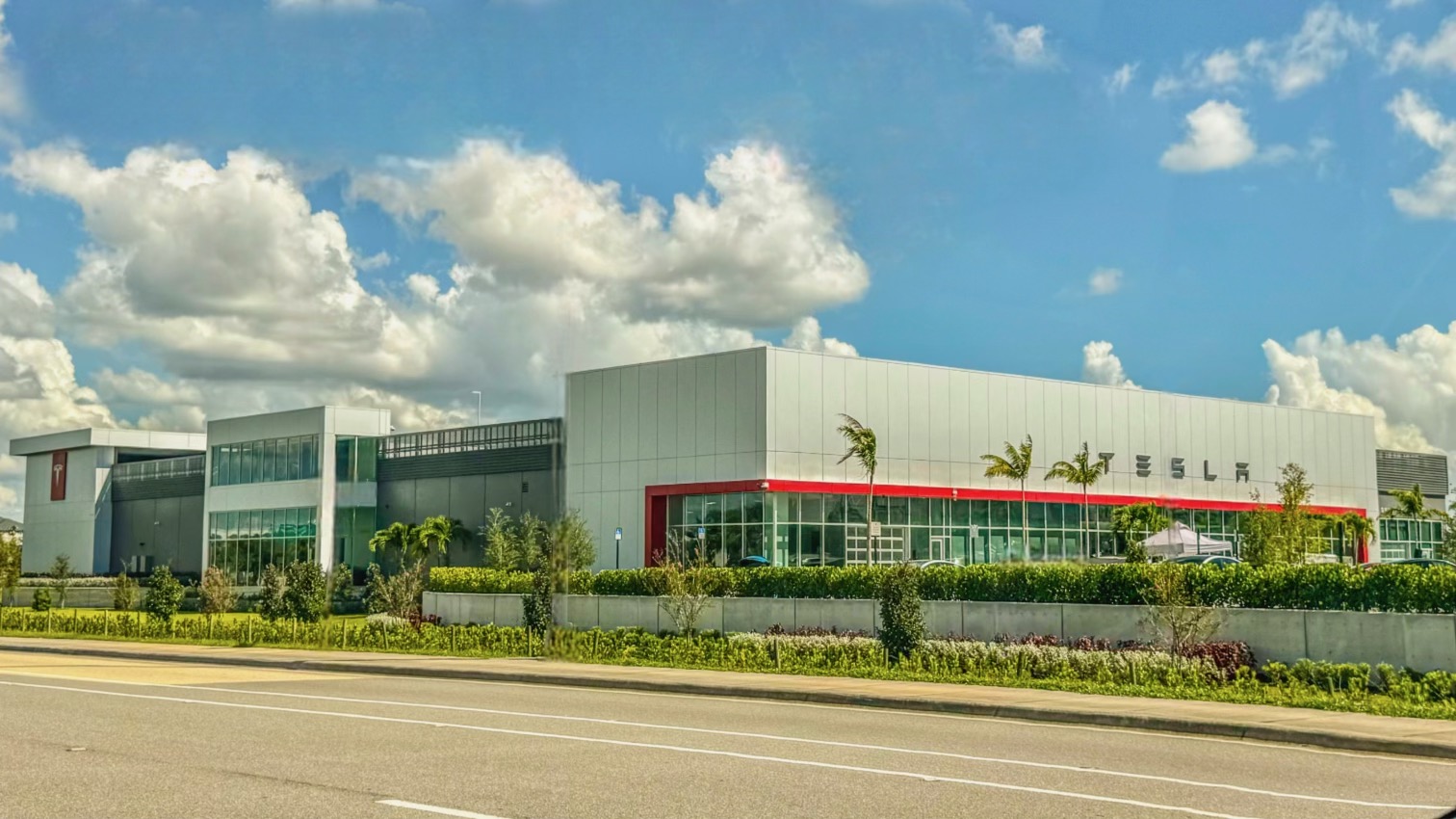Sign up for daily news updates from CleanTechnica on email. Or follow us on Google News!
The race to build more data centers is putting a strain on utility companies. Data centers are voracious consumers of electricity and the boom in artificial intelligence is making the situation worse. An AI-powered internet search consumes about 10 times as much electricity as a normal search — although what is normal is rapidly changing. AI is the new “must have” feature of an increasingly digital world. Google, for instance, now makes AI the default choice when conducting search operations.
The number of data centers is expanding rapidly worldwide, which is leading to delays in the scheduled closures of several coal-fired and nuclear generating stations. The world is demanding more data centers, even if that means pouring more climate altering emissions into the atmosphere at a time when we should be sharply reducing them. “Lord, what fools these mortals be,” William Shakespeare once noted. Microsoft recently entered into an agreement to restart the shuttered nuclear power plant on Three Mile Island in Pennsylvania to supply power for its latest data center expansion. A new 875 MW solar farm in Texas will send 85% of its electricity to Google to power its data centers in and around Dallas.
Data Centers & Transmission Lines
Building enough new renewable energy resources to meet the insatiable needs of Big Tech is hard enough, but connecting it to those data centers and server farms is another challenge that needs addressing. Building transmission lines and substations is an expensive proposition. In the customary business model in the utility industry, those costs are borne by all subscribers, but building new infrastructure that primarily supplies the needs of just one or two large customers places an outsize burden on everyone else. Using the current model, ordinary people are helping subsidize the Googles and Microsofts and Amazons of the world by helping to pay for the transmission upgrades they require.
That situation has been the focus of an ongoing controversy in Ohio, which is seeing a significant increase in the number of data centers proposed or under construction in that state. The principal utility company in that state, AEP Ohio, wants data center operators to commit to paying for almost all of the electricity they expect to use in the future so it can make the necessary grid upgrades knowing there will be money available to pay for them. The data center operators balked and proposed lower guaranteed payments. In a press release dated October 23, 2024, AEP Ohio said it had filed a settlement agreement that “addresses the extreme power needs of Ohio’s growing data center industry while protecting AEP Ohio’s other customers.” The staff of the Public Utilities Commission of Ohio, the Ohio Consumers’ Counsel, the Ohio Energy Group, Ohio Partners for Affordable Energy, and Walmart joined AEP Ohio in the filing.
“Ohio’s economic success in bringing data centers to our state comes with immense demands for electricity, and we have to meet those efficiently and responsibly,” said Marc Reitter, AEP Ohio president and chief operating officer. “The agreement insulates our other customers — including residents, small businesses, manufacturers, and other industries — from the impact of the necessary infrastructure improvements. Our goal throughout this process has been to provide customers with protections, while keeping Ohio an attractive place to run and grow a business. This proposal provides that balance and was developed with PUCO staff and consumer advocates. I’m grateful for the hard work of all of our stakeholders.”
Pay Us Now, Not Later
This agreement, which is subject to review and approval by the PUCO, requires large new data center customers to pay for a minimum of 85% of the energy they say they will need each month — even if they use less — to cover the cost of infrastructure needed to bring electricity to those facilities. It also creates a sliding scale that allows small and midsized data centers more flexibility. And it requires data centers to provide proof they are financially viable and able to meet those requirements, as well as to pay an exit fee if their project is canceled or unable to meet the obligations outlined in the electric service agreement contract. The requirements would be in place for up to 12 years, including a 4-year ramp-up period. Previously, a group of data center industry leaders filed a separate agreement, which was not supported by AEP Ohio, the PUCO staff, OCC, or OEG. They proposed to pay for a minimum of 75% of the energy they say they will use and excluded important customer protections and included other problematic provisions in their deal.
Data center development has expanded rapidly in recent years across AEP Ohio’s service territory. Electricity demand in Central Ohio, driven largely by data centers, already is expected to more than double by 2030, AEP said. “Our proposal recognizes the importance of data centers, not only to our region and Ohio’s economy, but to the country at large,” Reitter said. “We welcome the incredible investment large data centers are making in Ohio. Our agreement strikes a balance between the costly investments required for high-powered cloud and AI needs and protections for AEP Ohio’s other customers.”
Who Should Pay For Data Centers?
Who pays to bring electricity to data centers? That is a question that is being asked all across America. According to Google AI, the cost of transmission facilities is socialized across all users of the system, including those who may not directly benefit from the infrastructure. This has led to tensions in regions where data center growth is concentrated, such as Ohio.
A report by the Washington Post says the dispute in Ohio “may help answer one of the toughest questions hanging over the nation’s power grid: Who will pay for the huge upgrades needed to meet soaring energy demand from the data centers powering the modern internet and artificial intelligence revolution?” Google, Amazon, Microsoft, and Meta all opposed the plan supported by AEP Ohio and the staff of the Ohio PUC.
AEP Ohio said projected energy demand in central Ohio forced it to stop approving new data center deals there last year while it figured out how to pay for the new transmission lines and additional infrastructure they would require. The energy demands of data centers have created similar concerns in other hot spots such as Northern Virginia, Atlanta, and Maricopa County, Arizona, leaving experts concerned that the US power grid may not be capable of dealing with the combined needs of the green energy transition and the computing boom that artificial intelligence companies say is coming.
Severin Borenstein, a professor of economics from the University of California at Berkeley, told the Post that tech companies have good reason to fight the Ohio proposal. Other utilities around the country that are also concerned about the “volatility” of data center development will be closely watching this case, he said, potentially making such fights “a much more common negotiation.”
The Takeaway
We are not talking about trivialities here. AEP Ohio Vice President Lisa Kelso said there are 50 pending requests from data center customers seeking electric service at more than 90 sites in Ohio. If all of them are approved and built, they will need up to 30,000 megawatts of electricity — enough to power more than 20 million households. That additional demand would more than triple the utility’s previous peak load in 2023, she said.
And yet the tech companies feel they are being unfairly discriminated against. Energy consultant Brendon Baatz in testimony submitted to the Ohio regulator on behalf of Google said, “With its discriminatory focus on data centers, AEP Ohio is asking the Commission to pick winners and losers in the local economy by imposing unfavorable terms for basic electric service on a single industry.” Most readers will recognize that phrase “winners and losers” as code those opposed to government regulation routinely trot out to justify their own unfair advantage. Apparently Google thinks it is fair for a widow on a fixed income to pay more for electricity so it can generate more AI-generated content.
Michael Fradette, an energy expert who testified on behalf of Amazon Web Services, said that asking companies to predict how much power their data centers will need over a 10-year period with a high degree of accuracy is “unreasonable,” because actual consumption will depend on factors such as future technological advancement, customer demand and “volatility of weather.” Apparently Jeff Bezos and company believe utilities should spend big on transmission upgrades with no guarantee their investment will ever be paid off.
There is a solution to this. Let data companies create their own renewable energy resources and build their own transmission lines. That way, the dictates of the capitalist model are fulfilled — put capital at risk with the expectation of generating a satisfactory return on investment. If that return doesn’t materialize, the companies lose, not individual ratepayers. That seems eminently fair and reasonable, doesn’t it?

Chip in a few dollars a month to help support independent cleantech coverage that helps to accelerate the cleantech revolution!
Have a tip for CleanTechnica? Want to advertise? Want to suggest a guest for our CleanTech Talk podcast? Contact us here.
Sign up for our daily newsletter for 15 new cleantech stories a day. Or sign up for our weekly one if daily is too frequent.
CleanTechnica uses affiliate links. See our policy here.
CleanTechnica’s Comment Policy


